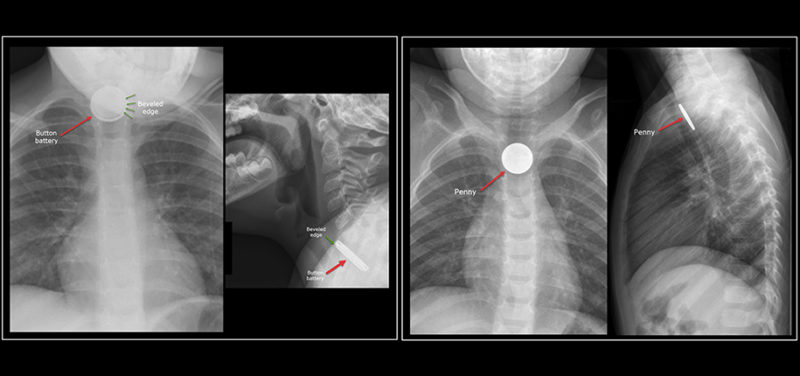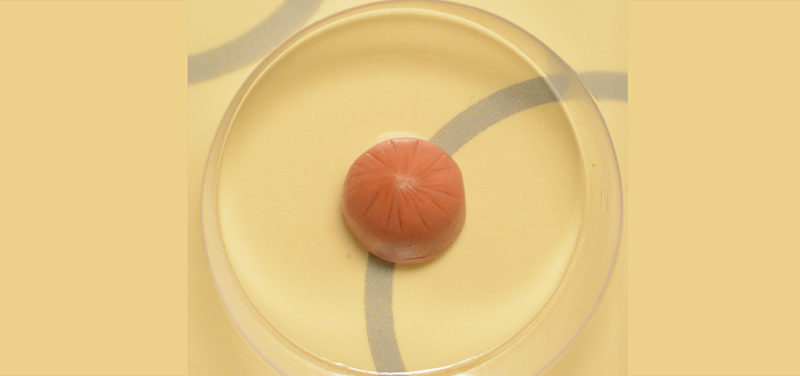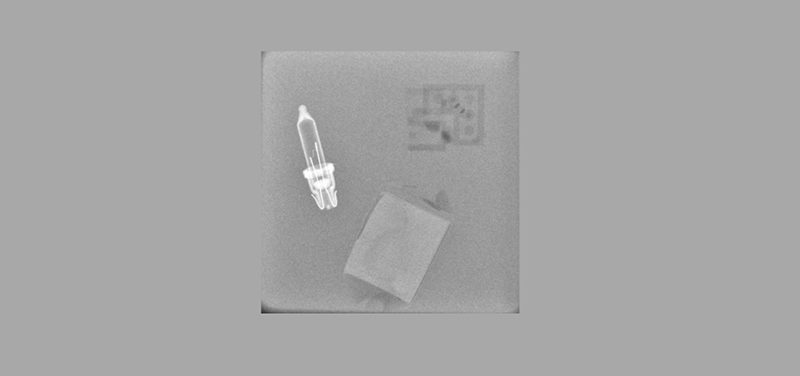
When he was younger, my older brother had a small plastic gun that shot shiny round BB pellets. One day he told my mom that a bunch of his BB’s were missing. Sure enough, the case of the missing BB pellets was solved one or two days later when they were found in his diaper.
It is common for infants, toddlers, and young children to put small shiny bright objects in their mouths and swallow them. The most useful imaging study to evaluate for a foreign body is a two-view x-ray (a frontal view of the neck through the pelvis and a lateral view of the upper airway). However, some non-metallic foreign bodies are not visible on x-rays and additional testing may be needed. Children can be asymptomatic or symptomatic, with the most common sign being a witnessed ingestion in an asymptomatic child and drooling, chest/neck pain, cough, respiratory distress, stridor, and painful swallowing in a symptomatic child.
The most concerning ingested foreign body are button batteries, which are commonly found in portable electronics such as toys, musical greeting cards, flameless candles, hearing aids, remote controls, flashing shoes, digital scales, keyless entry remotes, and wrist watches. When a button battery gets lodged in the esophagus, electrical currents and chemicals are released from the battery, causing damage to the surrounding soft tissues and possibly resulting in devastating complications or even death. The major complications include fistulas (abnormal passages) between nearby structures like the trachea and esophagus or even the esophagus and aorta (large blood vessel in the chest), tearing of the esophagus, or narrowing of the esophagus. According to data over a two-year period from the National Battery Ingestion Hotline, more than 1900 children swallowed button batteries, resulting in at least 20 fatal or major cases in children under the age of 6 years.
Related Article: Button Batteries Can Harm Children
A child should be taken to the emergency room immediately after a witnessed ingestion or if they are symptomatic so that appropriate imaging can be performed for diagnosis and subsequent management.
 Image: Chest x-rays of two different children who swallowed a penny (right) and a button battery (left). The distinguishing feature between a coin and a button battery is the circumferential step off or beveled edge seen in a button battery.
Image: Chest x-rays of two different children who swallowed a penny (right) and a button battery (left). The distinguishing feature between a coin and a button battery is the circumferential step off or beveled edge seen in a button battery.
Here are 8 different objects found around the house that may be potential “candy” for children. See if you can identify the foreign body!
[twentytwenty]

 [/twentytwenty]
[/twentytwenty]
[twentytwenty]

 [/twentytwenty]
[/twentytwenty]
[twentytwenty]

 [/twentytwenty]
[/twentytwenty]
 Image: Scrabble piece and peanut items. (The items floated out of their original position once water was added.)
Image: Scrabble piece and peanut items. (The items floated out of their original position once water was added.)
 Image: Items on the left are without water in their containers. Items on the rights are submerged in water.
Image: Items on the left are without water in their containers. Items on the rights are submerged in water.
Notice how the objects are more easily seen when surrounded by air rather than submerged in water. Keep in mind that the water images are a more accurate representation of a foreign object in the body and it is nearly impossible to see some of the objects!
Contributed by Dr. Anjani Naidu and edited by Glenn Miñano, BFA.
